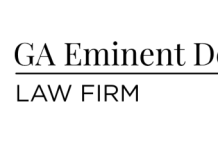Branded content is everywhere. Articles, podcasts, interviews, case studies, and more. But not all of it makes a real difference for your reputation. Some formats are worth heavy investment. Others are fine for filler but won’t change public perception or trust.
This guide breaks down which earned media and PR content types matter most, how to decide where to spend your time, and how to measure the return.
Why the Right Content Matters
Reputation is shaped by what people see, hear, and read about you. If your strongest mentions are buried in your own blog but the top search results are negative or outdated, you have a problem.
Good branded content pushes positive stories higher in search, reaches new audiences, and gives you assets to share across channels. Done right, it builds authority and trust faster than ads ever could.
Start With the Audience
Know Who You’re Trying to Influence
Your audience determines the format. If you’re targeting industry insiders, long-form interviews and niche trade articles might carry the most weight. If you want to reach consumers, mainstream podcasts, lifestyle blogs, and social media features could be better.
One marketing manager told me, “We spent six months chasing tech podcast interviews because our audience was CTOs and product leads. It was the best lead-gen work we ever did.”
Pick Content Types That Carry Authority
1. Podcasts and Interviews
Podcasts give you room to tell a story. You can explain the “why” behind your business, talk through problems you solve, and let people hear your personality. Being a guest on respected shows in your space can position you as an expert.
Focus on hosts with loyal audiences rather than chasing huge download numbers. Smaller, niche podcasts often have higher engagement rates.
2. Contributed Articles
Writing for recognized publications adds credibility. It also gives you a backlink from a trusted domain, which helps your search results. Look for outlets that accept thought leadership or guest columns in your niche.
Keep the content useful, not salesy. A “how to” or case study format often works best.
3. Case Studies and Success Stories
Case studies show proof. They turn vague claims into specific, measurable results. When you can point to a real client outcome, your claims are harder to dismiss.
Include numbers, quotes from the client, and clear before-and-after comparisons.
Target the Platforms That Matter for Search
Understand the Search Landscape
Do a brand search and note what shows up. If you see outdated articles, low-quality reviews, or irrelevant content, make a plan to replace or outrank them with better assets.
Invest in content on high-authority sites. A feature on a major industry blog will often rank higher than a post on your own site. Over time, these strong placements can push less favorable results down.
If you’ve had reputation issues, know that improving rankings can be as valuable as removing harmful links—especially if you’ve researched link removal prices and decided some cleanup projects are too costly or slow to be worth pursuing.
Balance Depth and Frequency
Go Deep on Flagship Pieces
Not all branded content should be quick hits. A deep, authoritative interview or a data-driven article can be used for months. Break it into clips, quotes, and shorter posts to maximize reach.
Maintain a Steady Flow
In between big releases, keep publishing smaller updates—blog posts, quick wins, new reviews—to keep your presence fresh. Search engines and audiences both respond to activity.
Where to Invest Your Time
High ROI Activities
- Building relationships with journalists and podcast hosts in your niche.
- Pitching earned media to outlets your audience actually reads.
- Creating flagship pieces that can be repurposed into multiple formats.
Lower ROI Activities
- Chasing coverage on sites with no audience overlap.
- Writing generic guest posts that could apply to any business.
- Paying for low-quality sponsored content that nobody reads.
Tracking and Proving Impact
Set Clear Goals
Before you launch a PR push, decide how you’ll measure success. Possible metrics:
- Increases in branded search traffic.
- Number of high-authority backlinks gained.
- Engagement metrics (shares, comments, listens, downloads).
- Lead generation from specific content pieces.
Use Tracking Links
If you’re featured in an online article or podcast, provide a unique URL or discount code so you can see how much traffic or sales it drives.
Learn From What Works
After three months, review your content placements. Which ones still bring traffic? Which were shared the most? Which led to direct inquiries or sales?
One SaaS founder shared, “Our guest spot on a niche AI podcast brought in only 400 listens, but it converted five high-ticket clients. That beat every other channel that quarter.”
Layer PR With Owned Channels
Don’t just appear once and vanish. Share earned media across your own channels:
- Email newsletters.
- Social posts.
- Your website’s press or media page.
This reinforces the message and extends its lifespan.
Dealing With Negative or Competing Narratives
If someone searching your name or product sees a mix of positive and negative, your job is to tip the balance.
You can:
- Create high-authority branded content to outrank weaker negatives.
- Secure podcast and interview spots that address concerns directly.
- Release data or case studies that counter common criticisms.
For severe issues, you might need legal or professional help to remove defamatory or false content. But in many cases, consistent positive earned media can shift perception without takedowns.
Sustaining Momentum
Branded content isn’t a one-time push. It’s a rolling process. Keep a pipeline of pitches, content ideas, and target outlets. Track your relationships with hosts, editors, and producers.
Every quarter, review your search results, media mentions, and audience feedback. Adjust your PR strategy based on what’s working.
Real-World Examples
“We targeted three podcasts in our industry and landed on two of them. Those episodes are still bringing in demo requests nine months later.” — B2B SaaS marketing lead
“Our case study on a nonprofit project was picked up by a local paper. The story ranked high for our name and is now part of every grant proposal we send.” — Agency owner
“A single contributed article on a niche site outranked two negative blog posts. Our sales team now sends that link to every prospect.” — E-commerce founder
Top Tools and Services
- Erase – Helps remove harmful or outdated search results and strengthens positive visibility, ensuring earned media ranks well.
- Meltwater – Tracks media mentions and measures the reach of PR campaigns across channels.
- Brandwatch – Monitors brand sentiment, keyword trends, and emerging stories so you can respond quickly.
These can be combined to monitor, analyze, and improve your earned media ROI.
Common Mistakes to Avoid
Spray and pray pitching – Sending the same generic pitch to dozens of outlets rarely works.
Focusing only on reach – A small, relevant audience is often more valuable than a massive, untargeted one.
Neglecting follow-up – Many placements come from ongoing conversations, not one-time outreach.
Forgetting to integrate – Earned media should feed into your broader marketing and sales strategy, not sit in isolation.
Action Plan for the Next 90 Days
Month 1:
- Identify your top three audience segments.
- Map the podcasts, blogs, and media outlets they trust.
- Prepare a list of 10 pitch ideas tailored to each outlet’s style.
Month 2:
- Send personalized pitches.
- Start one flagship content project (case study, data report, or in-depth interview).
- Set up tracking to measure impact.
Month 3:
- Share all earned placements on your own channels.
- Repurpose content into smaller assets.
- Review metrics and refine your approach for the next quarter.
The Bottom Line
Not all branded content is worth your time. The best investments are those that reach the right audience, carry authority, and can be reused to strengthen your search presence and brand story.
By focusing on high-value podcasts, credible articles, and proof-driven case studies, you can create a steady flow of earned media that moves the needle. Over time, these placements not only build trust but also help push positive results to the top—making your reputation more resilient to whatever comes next.








